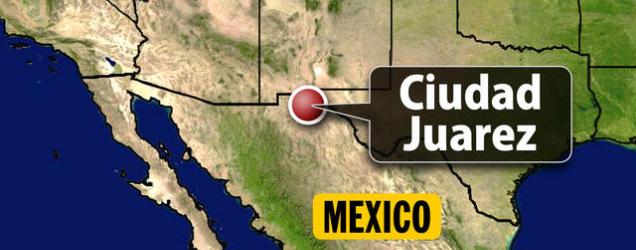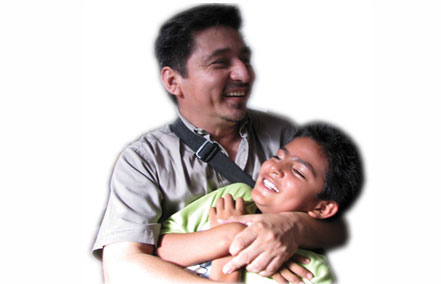Carlos Muñoz Burgos(Washington, CC)

La sécurité des citoyens est devenue un sujet brûlant dans les Amériques après une augmentation constante de la criminalité et de la violence au cours de la dernière décennie.. Du monde 50 villes les plus violentes, 45 sont dans les Amériques et 40 sont spécifiquement en Amérique Latine. Actuellement, Brésil, Mexique, et la Colombie comptent le plus grand nombre de villes violentes par pays sur le continent, avec 14, 12, et 5, respectivement.
Après avoir détenu le titre de « capitale mondiale du meurtre » pendant trois années consécutives, Ciudad Juárez a cédé cette image de marque peu flatteuse à San Pedro Sula, Honduras, lequel, dans 2011, avait un taux d'homicides de 159 par 100,000 habitants. Dans 2012, Ciudad Juárez a connu une réduction significative du nombre d'homicides, ce qui a été principalement attribué à l'hypothèse selon laquelle le cartel de Sinaloa est sorti triomphant de sa guerre contre le cartel de Juárez.. Néanmoins, à 55 homicides par 100,000 habitants, Juárez souffre toujours d'une épidémie de violence et il reste beaucoup à faire pour réduire les taux d'homicides dans cette ville..
La tempête parfaite
On affirme souvent que la croissance économique mène à la prospérité – même si ce n’est qu’à court terme., à long terme. Malheureusement, cela ne s'est jamais produit à Ciudad Juárez malgré le boom économique que l'industrie des maquiladoras a apporté à cette ville plus de 20 il y a des années. En fait, croissance économique, ainsi qu'un afflux massif de personnes venant d'autres régions du pays, minimum social, physique, infrastructure gouvernementale et de sécurité, et l’effondrement du contrôle politique du gouvernement fédéral, créé la tempête parfaite pour que la violence s'ensuive.
Par exemple, la croissance de l'industrie des maquiladoras à Ciudad Juárez a créé une urbanisation frappante de la ville sans planification appropriée. Le manque d'infrastructures physiques et éducatives signifie que les enfants des travailleurs des maquiladoras sont laissés sans surveillance, pendant que leurs parents travaillent. Sans scolarité appropriée ni modèles appropriés à suivre, ces enfants sont devenus des recrues faciles pour les gangs de rue qui coopèrent directement avec les cartels de la drogue. Souvent, ces gangs fournissent ce que leurs familles n'ont pas pu fournir; c'est, une identité et un sentiment d'appartenance.
En termes d'infrastructure de sécurité, une police sous-payée et inefficace a ouvert la voie à de nouvelles violences. D'abord, une police sous-payée montre à quel point la croissance économique ne s'est pas répercutée sur tous les secteurs de la population. Par conséquent, les forces de police de Ciudad Juárez sont généralement corrompues: Avec un salaire mensuel moyen $350, ils n'ont pas d'autre choix que d'accepter des pots-de-vin, allant de $200 à $400, des cartels pour subsister. Deuxième, Les forces de police ne sont pas bien formées, et ainsi, sont très inefficaces. En août 30, 2010, environ 10 pour cent des forces de police fédérales du Mexique ont été rejetées, y compris le chef de la police fédérale de Juárez, Pour échouer aux tests de compétence de base.
Dans un effort pour freiner la violence, Le président Calderon a déployé l'armée à Ciudad Juárez 2008. Aujourd'hui, plus que 10,000 Les soldats gèrent les tâches à Ciudad Juárez qui relèveraient normalement de la responsabilité de la police. Ces tâches incluent la conduite de patrouilles de sécurité, Faire des arrêts de trafic, et des points de contrôle Manning. Cependant, Cela n'a pas réduit la violence à Juárez; En fait, Dans certains cas, il l'a encore aggravé, avec plusieurs incidents impliquant les militaires en violations des droits de l'homme.
Tout ce qui précède, combiné avec le manque de responsabilité et de gouvernance, a grandement profité aux cartels de la drogue locaux, qui, jusqu'à récemment, étaient engagés dans une bataille continue pour contrôler les routes rentables de la drogue vers les États-Unis ainsi que vers un marché local de la drogue en plein essor. Ces cartels ne seraient pas aussi puissants qu’ils le sont si les circonstances étaient plus prometteuses pour les habitants de Ciudad Juárez..
Il y a de l'espoir devant
L'année dernière, 1,976 des personnes ont été tuées à Ciudad Juárez. Cela représente un 45% diminuer de 2010, et un 24% diminuer de 2009. En plus, dès septembre 2012, Ciudad Juárez a été témoin 658 meurtres, un chiffre incroyablement bas par rapport aux chiffres des années précédentes. Cependant, malgré la baisse du nombre de meurtres à Ciudad Juárez cette année, son taux d'homicides reste toujours élevé à 55 par 100,000.
Comme indiqué ci-dessus, la principale théorie attribuée à la réduction de la violence à Juárez cette année est le triomphe présumé du cartel de Sinaloa sur le cartel de Juárez. Cette monopolisation du pouvoir et du contrôle du marché illicite et des routes du trafic de drogue par le cartel de Sinaloa a atténué une bataille de territoire en cours qui, dans le passé, 2008-2011 période a donné lieu à plus de 9,000 homicides.
Cependant, la violence a déjà commencé à diminuer 2011 – bien qu’à un rythme moindre – lorsque Julian Leyzaola a pris la direction de la police. Son approche « d’une main de fer » et sa réputation de dur, ainsi que ses tactiques militaires critiquées qui auraient inclus la torture de suspects, aurait pu contribuer à réduire la criminalité à Ciudad Juárez. Aussi récemment, le gouvernement local de Juárez a dépensé 1 milliards de pesos (environ un tiers de son budget annuel) sur une force de police prétendument renouvelée de 2 300 agents. Les forces de police de Juárez ont également été renforcées 106 Brand Ford Pick-Up Trucks qui ont été remis par le maire de Juárez, Héctor Murguía, il y a quelques semaines. Malheureusement, Les salaires des policiers sont encore bas, et des réductions de dépenses ont dû être effectuées dans d'autres domaines pour subventionner les dépenses de police.
L'investissement lourd du gouvernement central a également été crédité d'avoir contribué à la baisse de la violence de Ciudad Juárez. À travers ses sont tous Juárez (Nous sommes tous Juarez) programme, L'administration Calderon a jusqu'à présent canalisé environ 400 millions de dollars, Environ deux fois le budget annuel de la ville, à la ville pour investir dans l'éducation, santé, affaires communautaires, et projets d'infrastructure. Ces projets ont certainement eu un effet positif à Juárez, car ils ont apporté des opportunités et des soulagement à certaines communautés.
Quoi de suivi?
La récente baisse de la violence a relancé la vie nocturne de Ciudad Juarez et a redonné espoir à ses citoyens.. Cependant, la pauvreté généralisée et le manque d'opportunités – les causes profondes des problèmes de Ciudad Juárez – doivent encore être combattus pour continuer à réduire la violence dans cette ville du nord.
Le président élu Enrique Peña Nieto a un défi majeur devant lui : consolider les acquis obtenus jusqu'à présent à Juarez. Néanmoins, canaliser des fonds pour investir dans le social, physique, les infrastructures gouvernementales et sécuritaires ne suffiront pas à assurer la durabilité à Juarez. C'est, si les citoyens ne se sentent pas en sécurité et si les petites entreprises n'investissent pas leurs ressources dans leur ville, aucun changement significatif ne se produira. En outre, l'accent doit être mis sur l'offre d'opportunités – espaces sûrs, éducation, emplois – pour les jeunes, la population la plus vulnérable et les principales cibles du recrutement dans le crime organisé.
Enfin, la nouvelle administration devra trouver le soutien de son voisin du nord, les États-Unis, dans les questions liées au contrôle des flux d’armes et à la consommation de drogues – le côté demande de l’équation.
Carlos Muñoz Burgos, Associé de programme pour la Division des communautés en transition, Associés créatifs internationaux
Créatif’s Programmation actuelle: Le Alliance régionale de la jeunesse USAID/SICA (AIR), mis en œuvre par Creative, le programme vise à réduire les facteurs de risque qui motivent les jeunes à s'impliquer dans la violence et la criminalité, y compris les gangs.. AJR fournit des subventions secondaires et une assistance technique pour l'élaboration et la mise en œuvre de plans municipaux de prévention du crime dans les municipalités de Santa Ana., Chalchuapa et El Congo. Dans le cadre d'un autre volet du programme AJR, Creative prend en charge le Système d'intégration de l'Amérique centrale SICA va mettre en œuvre la stratégie de sécurité de l’Amérique centrale, le développement d’un observatoire régional (OBSTACLE), Conseil consultatif du SICA, le développement des mouvements de jeunesse centraméricains contre la violence (CAYMAV), ainsi que l'adoption d'une politique sous-régionale de justice pour mineurs.
Le Mouvement des jeunes contre la violence a été créé en Guatemala dans 2009 en tant qu'initiative de Creative/USAID dans le cadre du programme Youth Challenge. Plus tard, le mouvement a été créé en Le sauveur (2010) et Honduras (2011) dans le cadre du programme AJR USAID SICA. Dans 2012, Créatif et USAID, sous Portée positive, a créé le Mouvement au Panama; et plus tard sous AJR USAID SICA, créé les sections nationales au Costa Rica, Belize et Nicaragua.
